National standard internal and external plastic coated steel pipe is a composite pipe with a plastic layer coated on the inner and outer surfaces of the steel pipe. It has excellent corrosion resistance, wear resistance, and pressure resistance, and is widely used in building water supply, drainage, fire protection, and other fields. The following is some detailed information about national standard internal and external plastic coated steel pipe:
1. Standards and specifications for
internal and external plastic coated steel pipes
The production and inspection of national standard internal and external plastic coated steel pipes are mainly based on the following standards:
- CJ/T120-2016: This is the current industry standard, equivalent to the national standard, used to replace CJ/T120-2008. This standard applies to the design, manufacture, and inspection of water supply plastic coated steel pipes with a medium temperature below 45°C.
- GB/T28897-2012: This standard specifies the terms and definitions, classifications and codes, ordering content, dimensions, weights, and allowable deviations, technical requirements, test methods, inspection rules, packaging, markings, quality certificates, transportation and storage of steel-plastic composite pipes.
2. Classification and marking of internal and external plastic coated steel pipes
National standard internal and external plastic coated steel pipes can be divided into the following categories according to the different materials of the inner and outer coatings:
- Inner coating materials: polyethylene coating and epoxy resin coating.
- Outer coating materials: hot-dip galvanizing layer, polyethylene coating, and epoxy resin coating.
3. Materials and processing of internal and external plastic coated steel pipes
- Base pipe: Commonly used base pipe materials include spiral welded pipe, straight seam welded pipe, and seamless steel pipe, which are selected according to caliber and pressure.
- Anti-corrosion materials: The performance indicators of polyethylene powder and epoxy resin powder used in the anti-corrosion coating of plastic coated steel pipes have specific requirements.
- Surface treatment: The base pipe needs to be sandblasted or pickled and phosphate before plastic coating to remove rust, oil stains, etc. on the surface.
4. Performance requirements of internal and external plastic coated steel pipes
- Appearance requirements: The inner and outer walls should be flat and smooth, with uniform color, without scars, pinholes, and adhered foreign matter.
- Size requirements: According to the caliber of the steel pipe, the coating thickness needs to meet specific requirements.
- Performance test:
Pinhole test: There should be no electric sparks on the inner and outer surfaces of the plastic-coated steel pipe.
Adhesion: The adhesion of the polyethylene coating should be no less than 30N/cm, and the adhesion of the epoxy resin coating should be no less than level 3.
Bending performance: The bending test was carried out at room temperature, and the coating had no cracks or peeling.
Flattening performance: The flattening test was carried out at room temperature, and the coating had no cracks or peeling.
Impact performance: The impact test was carried out at room temperature, and the coating had no cracks or peeling.
Sanitary performance: Plastic-coated steel pipes for transporting drinking water should comply with the provisions of the GB/T17219 standard.
5. Transportation and storage of internal and external plastic-coated steel pipes
- Transportation: When transporting and loading pipes, measures should be taken to prevent scratches on the outer coating. After loading, they need to be tied firmly to prevent severe impact during transportation.
- Storage: Plastic-coated steel pipes should be stored flat and should not be stored outdoors for a long time. The bottom needs to be supported by two pads. There should be flexible spacers between the pads and the plastic-coated steel pipes, as well as between the pipes.
6. Application areas of internal and external plastic-coated steel pipes
National standard internal and external plastic-coated steel pipes are widely used in the following fields due to their excellent corrosion resistance and wear resistance:
- Building water supply: used for transporting drinking water and hot water, etc.
- Firefighting pipelines: used for firefighting water supply systems.
- Industrial pipelines: used for fluid transportation in chemical, petroleum, and other industrial fields.
Summary
National standard internal and external plastic-coated steel pipes are high-performance composite pipes with the advantages of corrosion resistance, wear resistance, and pressure resistance. They are widely used in building water supply, fire protection, industrial pipelines, and other fields. Its production and inspection strictly follow relevant national standards and industry standards to ensure the quality and performance of the products.
The internal and external plastic coated steel pipes have excellent environmental performance, which is mainly reflected in the following aspects:
1. Environmental protection of the production process:
- Avoid toxic substances: The addition of toxic substances is strictly avoided in the production process of plastic coated steel pipes to ensure the safety and harmlessness of the products.
- Energy saving and emission reduction: The advanced production process is adopted to minimize energy consumption and waste emissions to reduce the impact on the environment.
2. Environmental protection during use:
- Long life: Plastic coated steel pipes have excellent corrosion resistance and long service life. This means that in the long-term use process, it can effectively reduce the frequency of replacement, thereby reducing resource consumption and waste generation.
- Prevent water pollution: In the water supply and drainage system, plastic coated steel pipes can prevent water pollution and ensure water supply safety.
- Reduce cleaning and maintenance: Its inner wall is smooth and not easy to accumulate scale, which reduces the frequency of cleaning and maintenance, and further reduces the impact on the environment.
3. Environmental protection in the application field:
- Wide applicability: Plastic coated steel pipes are suitable for various environments, including buried and humid environments, and can withstand high and extremely low temperatures.
- Corrosion and wear resistance: In the fields of petroleum, chemical industry, municipal administration, etc., plastic-coated steel pipes can effectively prevent the corrosion of the internal medium of the pipeline to the steel pipe, extending the service life of the pipeline.
- Reduce leakage and pollution: The application of plastic-coated steel pipes in the field of oil and gas can effectively prevent the leakage of oil and gas and reduce pollution to the environment.
4. Other environmental advantages:
- Insulation performance: The coating of the plastic-coated steel pipe has good insulation performance, which can prevent the conduction of current and ensure the safe operation of the pipeline.
- Flame retardant performance: The plastic-coated steel pipe has good flame retardant performance, which can meet the fire protection requirements and protect people's lives and property.
In summary, the internal and external plastic-coated steel pipes show good environmental performance during production and use and are an environmentally friendly choice of pipeline materials. Choosing plastic-coated steel pipes is to choose responsibility for the environment and commitment to the future.
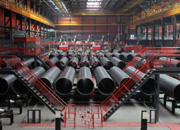 Threeway Steel is known as a professional supplier engaged in manufacturing and distributing a wide range of steel pipe, and our headquarter located the central part of China – Hunan and six associated factories throughout China.
Threeway Steel is known as a professional supplier engaged in manufacturing and distributing a wide range of steel pipe, and our headquarter located the central part of China – Hunan and six associated factories throughout China.
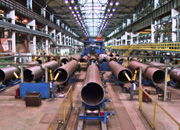 Threeway Steel is known as a professional supplier engaged in designing, manufacturing and distribution of a wide range of steel products with the headquarter located the central part of China – Hunan and six associated factories throughout China.
Threeway Steel is known as a professional supplier engaged in designing, manufacturing and distribution of a wide range of steel products with the headquarter located the central part of China – Hunan and six associated factories throughout China.
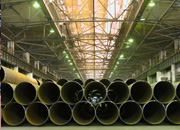 Threeway Steel is known as a professional supplier engaged in designing, manufacturing and distribution of a wide range of steel products with the headquarter located the central part of China – Hunan and six associated factories throughout China.
Threeway Steel is known as a professional supplier engaged in designing, manufacturing and distribution of a wide range of steel products with the headquarter located the central part of China – Hunan and six associated factories throughout China.
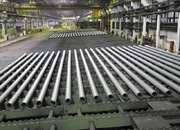 Threeway Steel is known as a professional supplier engaged in designing, manufacturing and distribution of a wide range of steel products with the headquarter located the central part of China – Hunan and six associated factories throughout China.
Threeway Steel is known as a professional supplier engaged in designing, manufacturing and distribution of a wide range of steel products with the headquarter located the central part of China – Hunan and six associated factories throughout China.
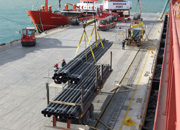 Threeway Steel is known as a professional supplier engaged in designing, manufacturing and distribution of a wide range of steel products with the headquarter located the central part of China – Hunan and six associated factories throughout China.
Threeway Steel is known as a professional supplier engaged in designing, manufacturing and distribution of a wide range of steel products with the headquarter located the central part of China – Hunan and six associated factories throughout China.

